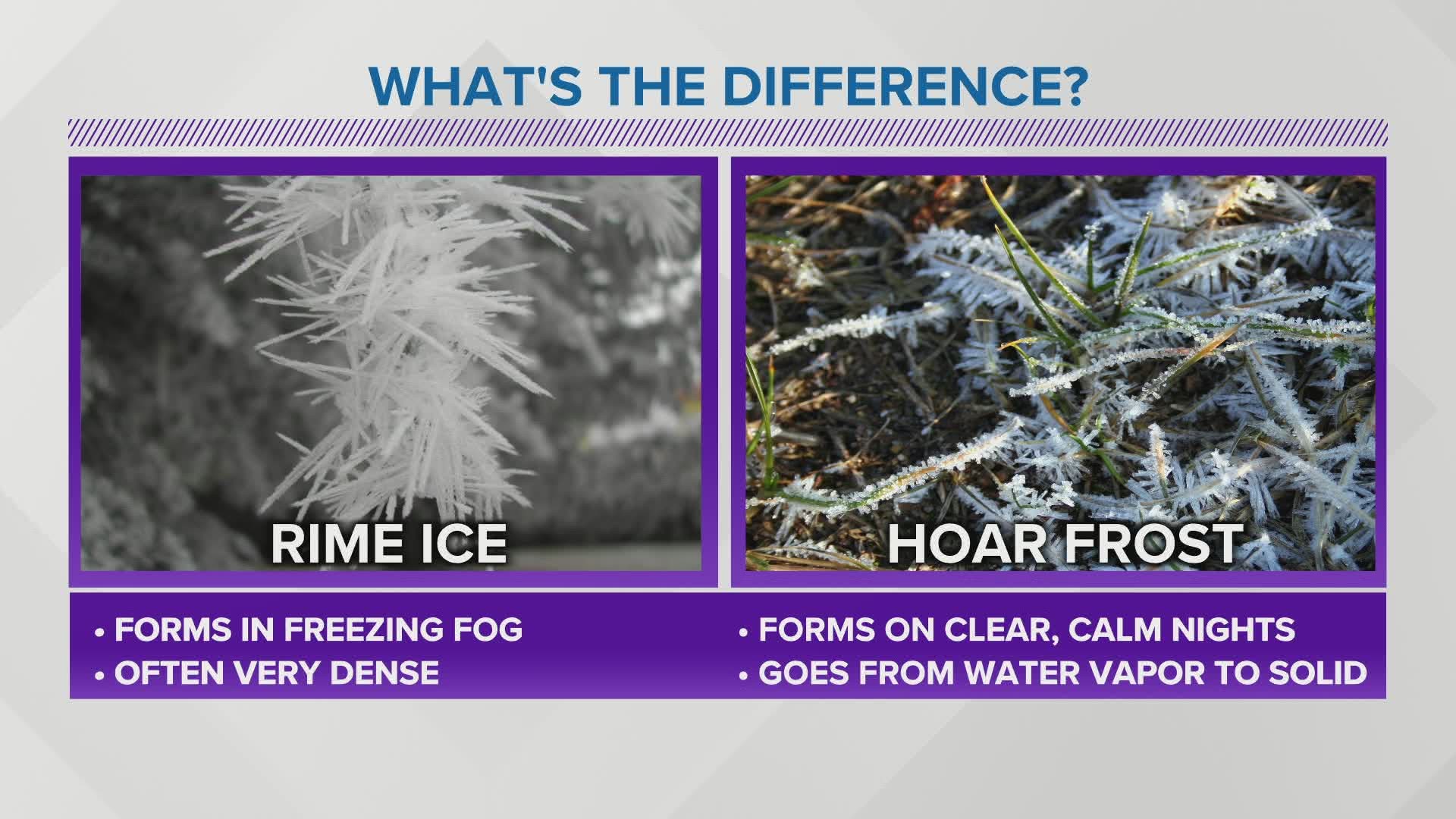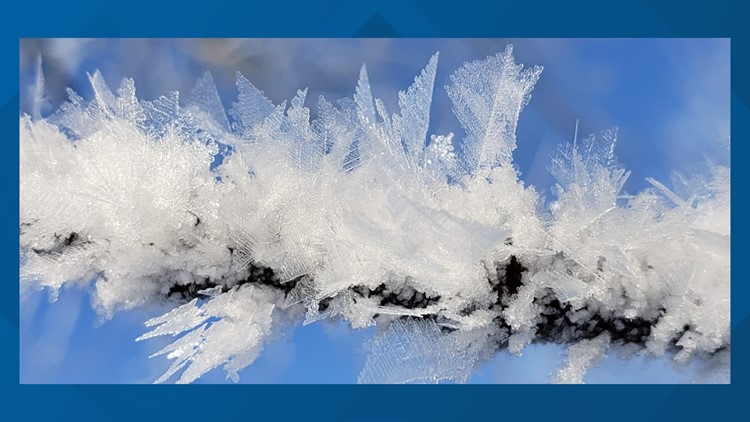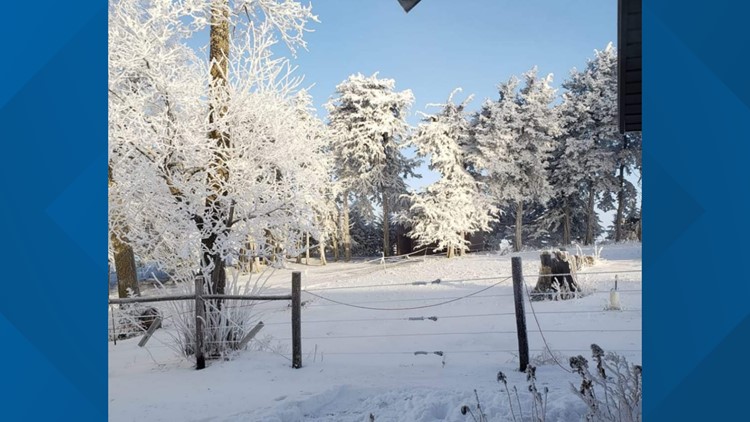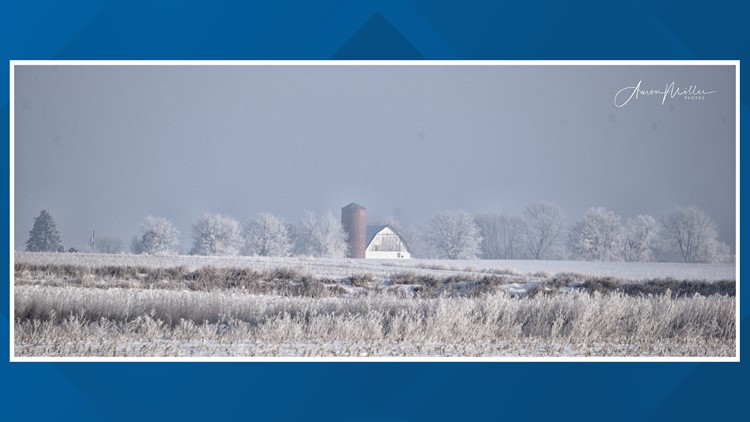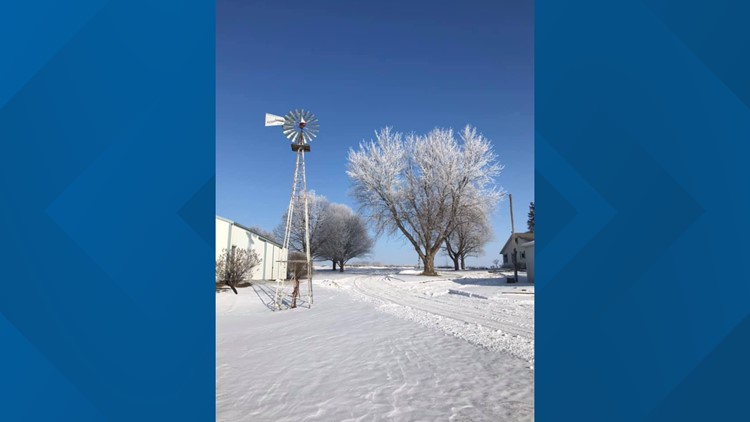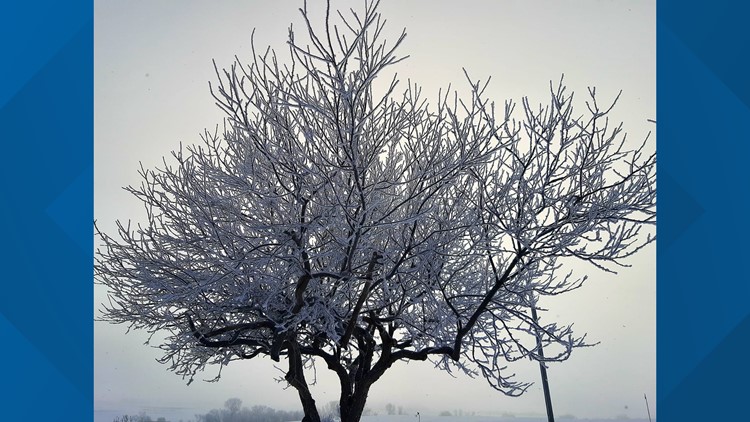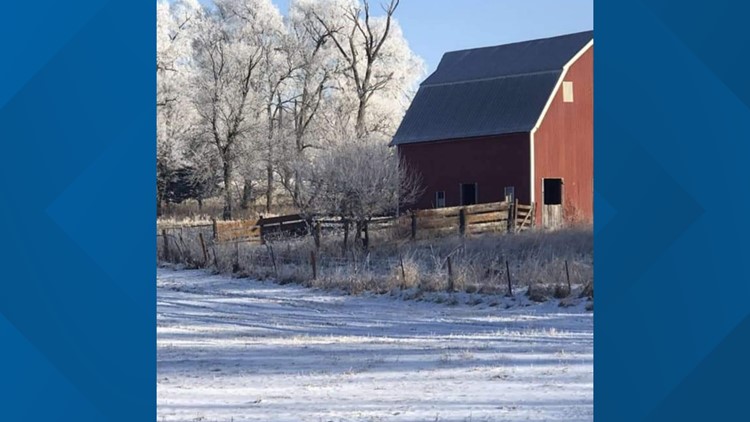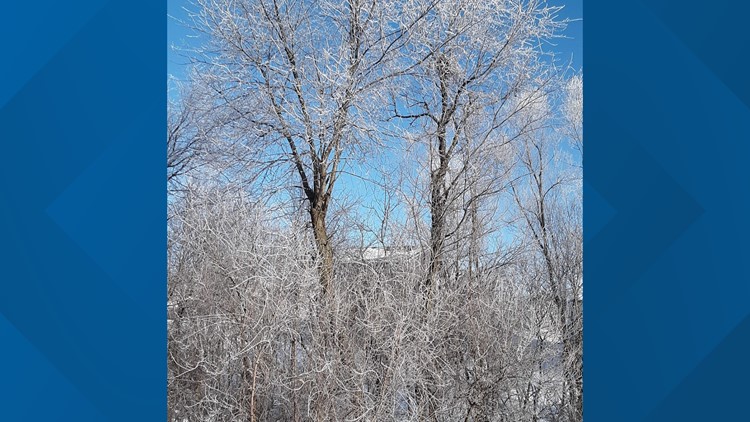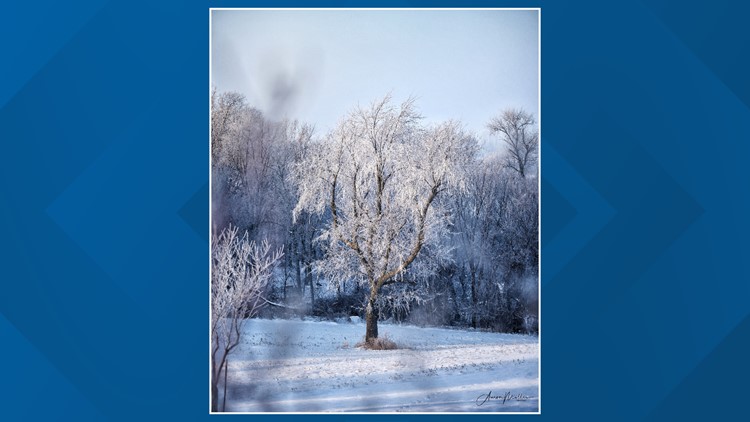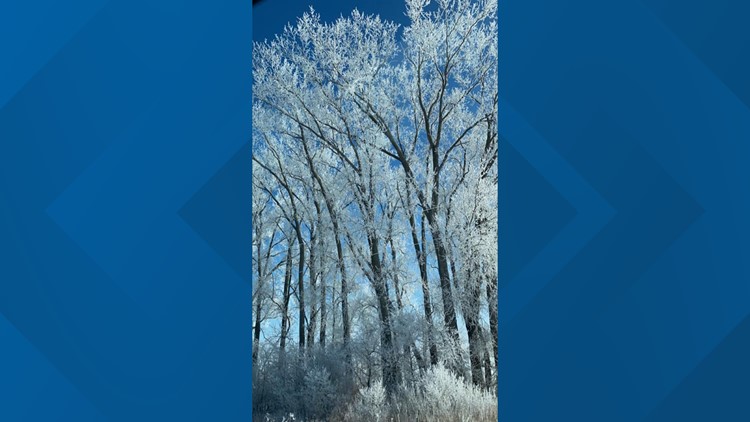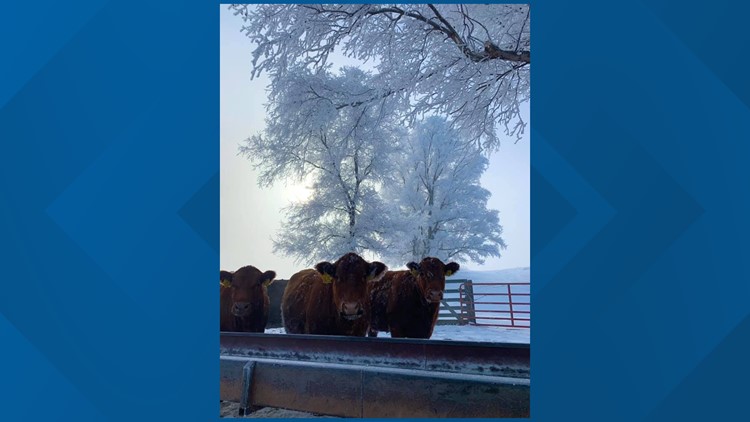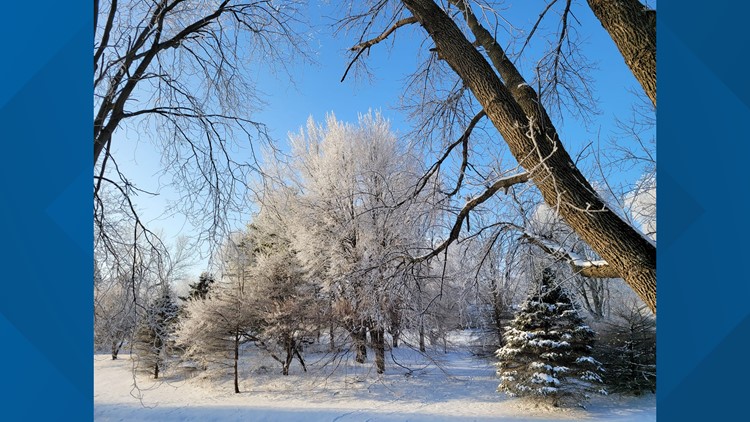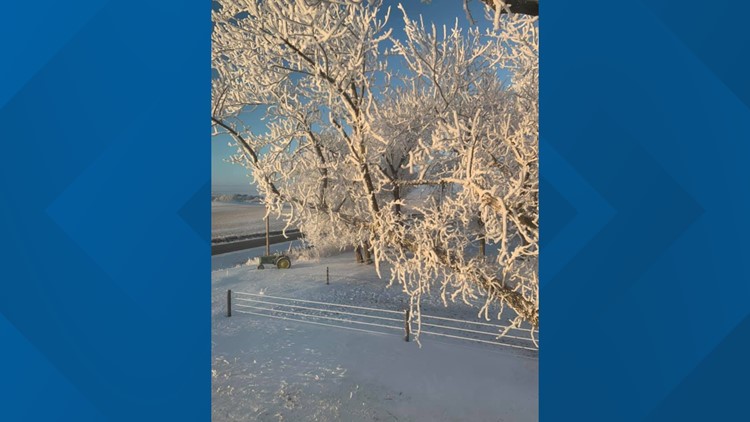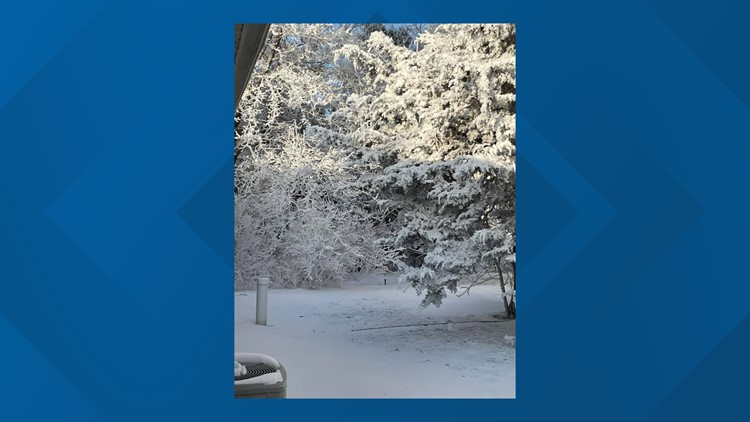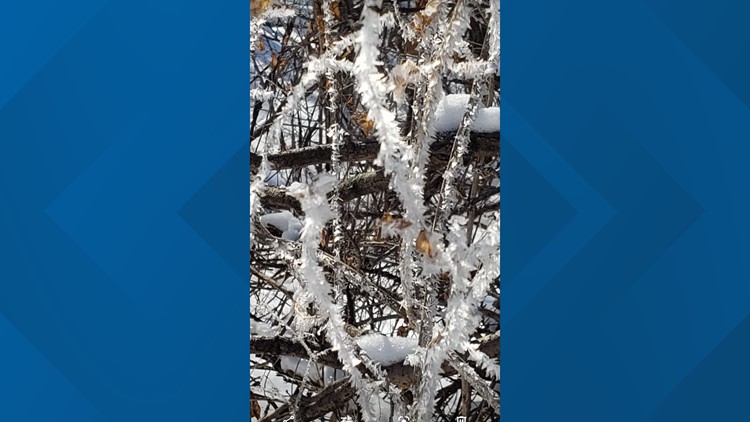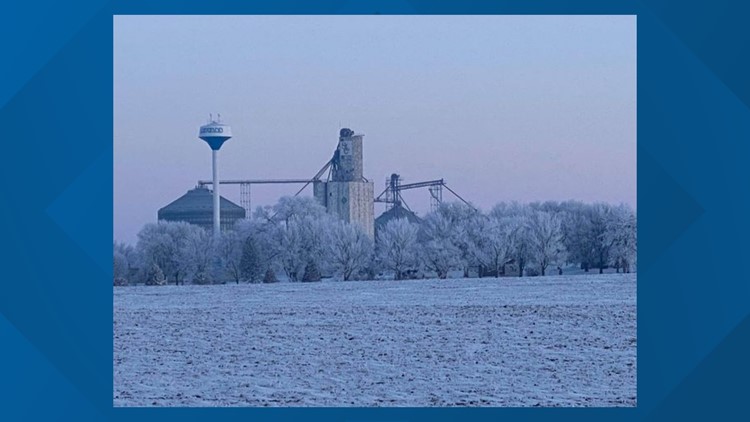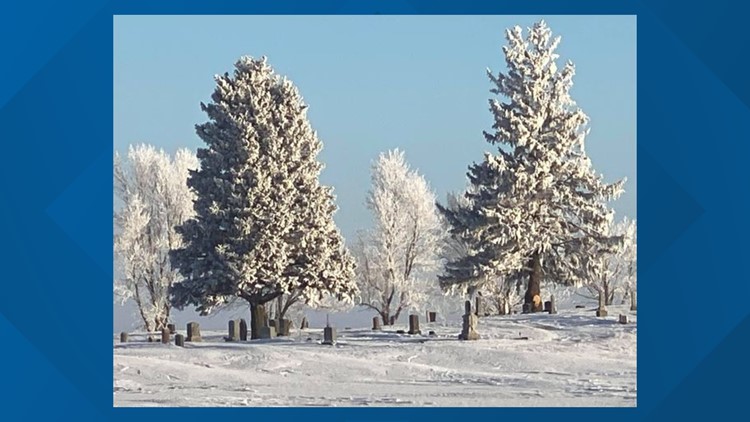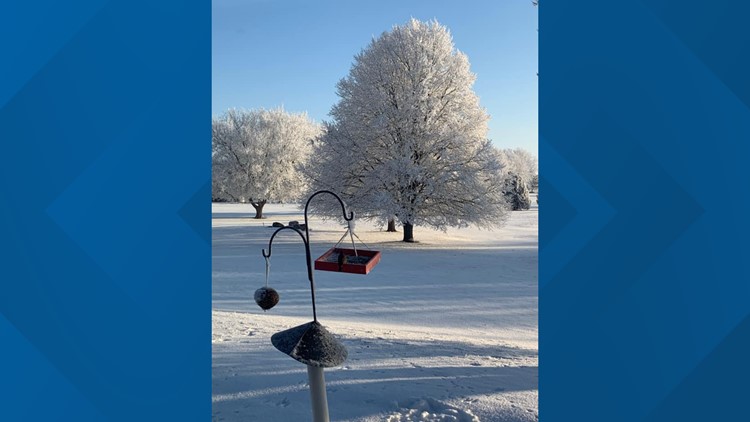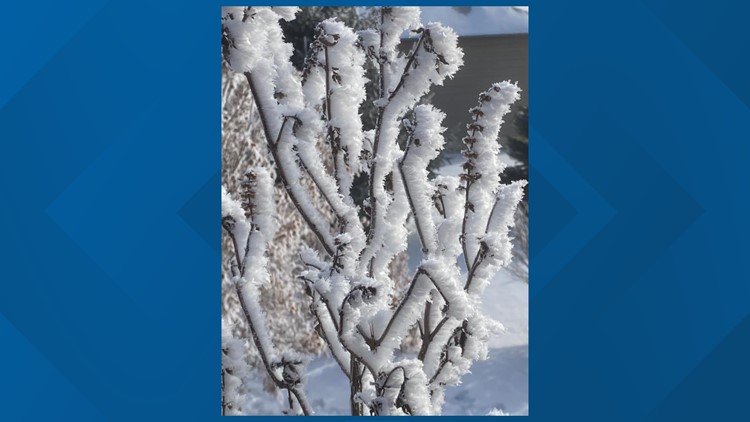DES MOINES, Iowa — Hoar frost and rime ice are fairly common sights across Iowa during the winter, especially early in the morning on frigid cold days.
In most cases, the presence of excess moisture in the lower levels of the atmosphere leads to this exciting weather phenomenon.
The challenge with hoar frost and rime ice arises in the process of differentiating between the two concepts. They are both visually similar, making it especially difficult for even the most experienced meteorologists.
The National Weather Service explains hoar frost and riming as the "deposit of crystals formed by either direct freezing or sublimation on objects, usually smaller items that are freely exposed to air, such as tree branches, plants, wires, and power poles."
The difference between hoar frost and rime ice lies in the source of the moisture.
With rime, the moisture comes from freezing fog water droplets that turn directly from a liquid state to a solid state, or through direct freezing.
On the other hand, hoar frost occurs on a clear, cold night where water vapor sublimates: transitioning immediately from a gaseous state to a solid state.
Either way, it can produce some beautiful winter scenery, especially when the sun is shining brightly.
Freezing fog creates a winter wonderland across Iowa
For more science behind the weather from our Local 5 team of meteorologists, be sure to check out the Local 5 Weather Lab on YouTube.

